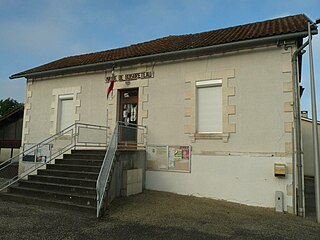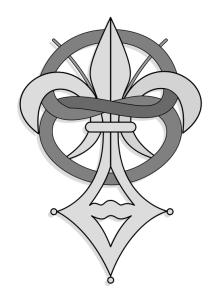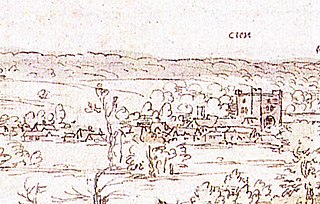
A priory is a monastery of men or women under religious vows that is headed by a prior or prioress. Priories may be houses of mendicant friars or nuns, or monasteries of monks or nuns. Houses of canons regular and canonesses regular also use this term, the alternative being "canonry".

Ewenny Priory, in Ewenny in the Vale of Glamorgan, Wales, was a monastery of the Benedictine order, founded in the 12th century.
Alien priories were religious establishments in England, such as a monastery or convent, which were under the control of another religious house outside England. Usually the mother-house was in France.
Sopwell Priory was built c. 1140 in Hertfordshire, England by the Benedictine abbot of St Albans Abbey, Geoffrey de Gorham. It was founded as the Priory of St Mary of Sopwell and was a cell of St Albans Abbey.
Events from the year 1536 in Ireland.
Events from the year 1539 in Ireland.
Events from the year 1540 in Ireland.
Events from the year 1541 in Ireland.

Boisbreteau is a commune in the Charente department in southwestern France.

Lancaster Priory, formally the Priory Church of St Mary, is the Church of England parish church of the city of Lancaster, Lancashire, England. It is located near Lancaster Castle and since 1953 has been designated a Grade I listed building. It is in the deanery of Lancaster, the archdeaconry of Lancaster and the Diocese of Blackburn. Its benefice is combined with that of St John and St Anne.
The Edgbaston Priory Club is a private members' tennis, squash and leisure club in Birmingham, England. The club is the host of the annual WTA Tour stop, the Nature Valley Classic. The stadium court has a capacity of 2,500 people.

The Prieuré de Sion, translated as Priory of Sion, is a fringe fraternal organisation, founded and dissolved in Jerusalem in 1099 by Godefroy Duc de Basse to protect a great secret that was in his family since the time of Christ and for fear of losing this secret after his death, he established a secret society which is the brotherhood of Sion and was assigned to 'protect the secret by transfering the secret from one generation to another. In the 1960s, Plantard created a fictitious history for that organization, describing it as a secret society founded by Godfrey of Bouillon on Mount Zion in the Kingdom of Jerusalem in 1099, conflating it with a genuine historical monastic order, the Abbey of Our Lady of Mount Zion. In Plantard's version, the Priory was devoted to installing a secret bloodline of the Merovingian dynasty on the thrones of France and the rest of Europe. This myth was expanded upon and popularised by the 1982 pseudohistorical book The Holy Blood and the Holy Grail and later presented in the preface of the 2003 novel The Da Vinci Code.

King's Mead Priory was a Benedictine Priory situated west of Derby, in the area currently known as Nun's Street, or Nun's Green. It was the only Benedictine Nunnery in Derbyshire.

Hinckley Priory was a small medieval monastic house in the town of Hinckley, Leicestershire, England.

Longleat Priory was a priory near Warminster, Wiltshire, in the south of England. A short-lived priory was established and dissolved near to Longleat in the 12th century. The main priory was established before 1233 and was under the control of the Dean of Salisbury until its dissolution in 1529.

Sheen Priory in Sheen, now Richmond, London, was a Carthusian monastery founded in 1414 within the royal manor of Sheen, on the south bank of the Thames, upstream and approximately 9 miles southwest of the Palace of Westminster. It was built on a site approximately half a mile to the north of Sheen Palace, which itself also occupied a riverside site, that today lies between Richmond Green and the River Thames.

Bentley Priory Nature Reserve is a Site of Special Scientific Interest and Local Nature Reserve in Stanmore in the London Borough of Harrow, surrounding the stately home of Bentley Priory. It is a 55 hectare mosaic of ancient woodland, unimproved neutral grassland, scrub, wetland, streams and an artificial lake, an unusual combination of habitats in Greater London.
The priory of Plessis-Grimoult is a twelfth century French priory built by the "Order of the Regular Canons of St. Augustine". Located in Le Plessis-Grimoult in the department of Calvados, the priory has been listed as a historic monument since 1928. The nearby remains of a fortified garden and archaeological site were listed in 1996.












